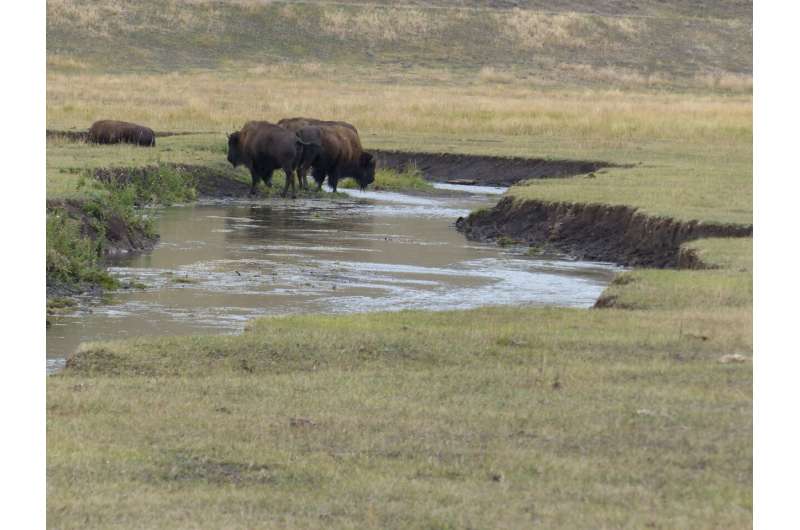This article has been reviewed according to Science X's editorial process and policies. Editors have highlighted the following attributes while ensuring the content's credibility:
fact-checked
peer-reviewed publication
proofread
Scientists find that bison are impacting streams in Yellowstone National Park

Greater numbers of bison in Yellowstone National Park are affecting the biological diversity of the important streamside habitats of the park, according to a new report published in the journal Ecosphere. Riparian areas (streamside zones) form the interface between terrestrial and aquatic ecosystems and are hotspots of biodiversity and productivity in the public lands of the Western U.S.
The study shows that bison in the northern Yellowstone National Park are having major negative impacts on the composition and structure of riparian plant communities, thus contributing to their biotic impoverishment, and causing a loss of ecosystem services provided by these important communities.
Furthermore, "the effects of increased bison numbers are apparently exacerbating the effects of climate change, as observed through the continued shift in plant communities that are adapted to warmer and drier conditions," according to Dr. Boone Kauffman, emeritus professor of Fisheries, Wildlife and Conservation Sciences at Oregon State University (OSU) and the lead author of the study.
The majestic bison herds in northern Yellowstone have greatly increased in numbers during the last two decades. These bison spend large periods of time in the broad open floodplains of the park's Northern Range, where they are adversely affecting composition, structure, and diversity of streamside ecosystems through grazing the plants and trampling the streambanks. "This results in eroding streambanks, loss of willows and declines in the number of native plant species" said co-author, William Ripple of OSU and the Biological Conservation Institute in Corvallis, Oregon.
National Parks strive to maintain native plant and animal communities. But the study found that in the areas with the highest bison use, exotic species overwhelmingly dominated the composition of riparian communities. In addition to the direct relationships between bison use and the abundance of exotic grasses, there were significant inverse relationships between bison use and total species diversity. Bison use also appeared to decrease the abundance of wetland-obligate species replacing them with plants adapted to drier environments. This means that bison are creating drier, warmer site conditions thereby locally intensifying the effects of climate change.
While current numbers of bison are overgrazing and degrading important riparian communities, the authors also noted that these communities are resilient and would recover if the pressure by this large herbivore was greatly reduced.
More information: J. Boone Kauffman et al, Bison influences on composition and diversity of riparian plant communities in Yellowstone National Park, Ecosphere (2023). DOI: 10.1002/ecs2.4406
Journal information: Ecosphere
Provided by Conservation Biology Institute



















